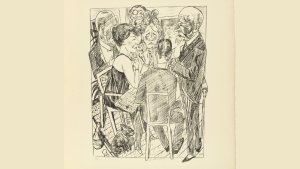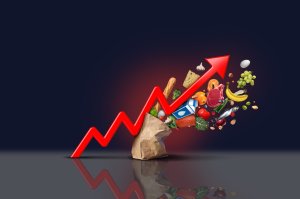Conventional wisdom asserts that American politics is becoming more and more tribal. But the chiefs of the tribes share a lot in common: dependence on big money.
Talk about “tribalism” in American politics is all the rage. But in politics the chiefs of the tribes do almost all the talking. And they raise money, on a colossal scale. So, take a look. Does their fundraising reflect a tide of small donations from masses of concerned Americans they claim to be speaking for?
Size of Contributions: Profiles of American Political Leaders, 2016 Cycle

The Lesson:
- Political leaders of both major parties depend heavily on large contributions — meaning over $10,000 or $100,000 — in our 2 year election cycles.
- Mitch McConnell is uniquely reliant on them. In 2016 Clinton relied more on them than Trump, though both had high levels.
- Bernie Sanders was the one exception. Almost 60% of his were below the $200 limit for itemization. He received essentially no large contributions. Trump also received substantial small contributions.
But perhaps through some miracle of democracy elections express the will of the people anyway?
So, take a look at some more pictures. Does their fundraising reflect a tide of small donations from masses of concerned Americans they are speaking for?
What would the sound of money talking look like?
How about a straight line?
The vote split in races closely tracks the money split in the 2016 Congressional elections:


All American elections for which the data exist show this pattern
(See Ferguson, Jorgensen, Chen, 2016).
But it’s not a pathology peculiar to the US. French parliamentary and municipal elections show the same “linear model” pattern (Cage, 2018).
US House Elections, 1980-2012
Money spent closely tracks votes, yet again.

The same pattern shows in Senate Elections, 1980 to 2014

Saving the appearances?
Maybe the money follows votes?
Not in general: See Ferguson, Jorgensen, and Chen’s “How Money Drives US Congressional Elections,” INET Working Paper # 48, 2016
Many estimates of “donor concentration” — how much of total money comes from a few donors – exist. We find none convincing; they are nearly all too low, even when the numbers are shocking. They do poorly at aggregating money from people in the same firms.
Measuring Formal Campaign Money Is Very Difficult
- Must combine Federal Election Commission totals + IRS, which oversees “527” monies + state and local
- Names of individuals are unreliable; same with addresses, occupations, Sr., Jr., Ms., etc.
- Many company names are opaque or disguised
- Massive double counting, including “ersatz dark money” with PACs and 527s party transfers, etc.; disentangling flow of actual new money from real sources is the key problem
- Critical role of the “investing unit” – that is putting people from the same companies together.
See Ferguson, Jorgensen, Chen, 2013, 2016, 2017; our estimates are routinely much higher than others’.
Our estimates do not include state and local races, unless they make it into federal sources.
Percent of Original Money from Top 400 Donors & Top .01% of Donors
| DONOR | PERCENT | AMOUNT |
|---|---|---|
| Top 400 Donors | % 29.86 | $2,446,370,446.62 |
| Top .01% | % 57.16 | $4,682,337,094.94 |
Percent of Original Money from Top 400 Donors & Top .01% of Donors, Not Including Labor
| DONOR | PERCENT | AMOUNT |
|---|---|---|
| Top 400 Donors | % 26 | $2,150,496,653.66 |
| Top .01% | % 54 | $4,386,463,301.98 |
The State of Countervailing Power in America, 2016
- Sum the two types of Labor contributions — itemized and un-itemized $ totals — to arrive at total Labor $ in federal elections and compare to all other money.
- $564,592,573 — 7% of all money
Some leaders of the Blue Tribe are now proposing a “bold” reform:
Refuse all PAC money.
What difference would that make?
Our answer:
Very little.
Contributions from Pacs to Dem Senate campaigns add up to about 10% of all spending.
(Higher figures you see come from excluding “outside” money from Super Pacs and non-profits officially unconnected to the campaigns.)
Even assuming no substitution of additional personal contributions for the missing pac funds (a ridiculous notion), this doesn’t add up to much.
What would truly change the system?
First consider two sobering points:
- The power of money is directly related to inequality.
- There may be a point of no return. Consider the next graph.
This plots salaries of top federal regulators over time against incomes of those in financial markets. If you can walk out of your post to become far richer, it is idle to expect serious regulation.

Figure After Ferguson and Johnson, 2013
And Remember: Formal Campaign Money is Only A Slice of the Spectrum of Political Money

Figure After Ferguson, Jorgensen, and Chen, 2017
Campaign finance follows the basic axiom of the investment theory of politics:
Campaigning isn’t free. Costs are much higher than classical liberal theorists believed. As a result, either everyone pays a little to fund campaigns or a few pay for nearly everything — and control the system.
Public funding would represent a substantial improvement; and we think the few places in the US that have tried it have gained from it. Only it institutionalizes the possibility for people to run and be heard without depending on big money.









